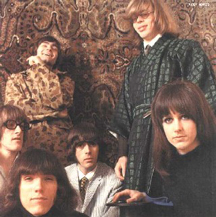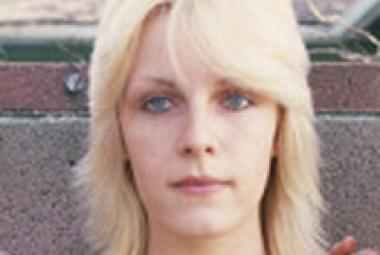Jefferson Airplane was an American rock band formed in San Francisco, California in 1965. A pioneer of counterculture-era psychedelic rock, the group was the first band from the San Francisco scene to achieve international mainstream success. They performed at the three most famous American rock festivals of the 1960’s — Monterey (1967), Woodstock (1969) and Altamont (1969) — as well as headlining the first Isle of Wight Festival (1968). Their 1967 record Surrealistic Pillow is regarded as one of the key recordings of the “Summer of Love”. Two hits from that album, “Somebody to Love” and “White Rabbit”, are listed in Rolling Stone’s “500 Greatest Songs of All Time”. (More from Wikipedia)
As depicted in Gimme Shelter (I saw the film when it came to theatres in 1970, but I never want to see it again), one audience member, Meredith Hunter was stabbed to death by several bikers after he pulled a gun – and yes, someone caught the incident on film. Lead male singer Marty Balin of Jefferson Airplane was knocked out cold by a Hells Angel, and Mick Jagger was punched in the face by an unruly fan shortly after his arrival by helicopter. It was a perfect storm where simply everything went wrong – the rain and the other privations at Woodstock were nothing compared to what occurred at Altamont.
The early female rock stars got a lot of attention for their bands, with Janis Joplin in Big Brother and the Holding Company and Grace Slick in Jefferson Airplane (and later in Jefferson Starship and Starship) being two of the biggest. A current Broadway show called A Night with Janis Joplin features Mary Bridget Davies in the title role; Davies is good enough at her job to have previously toured with Joplin’s former band Big Brother and the Holding Company.
(October 2013)
* * *
Within two months of its release, Cheap Thrills by Big Brother and the Holding Company was the #1 album in the country on the Billboard charts where it remained for most of the rest of the year. Surrealistic Pillow from the Jefferson Airplane made it to #3, and the Grateful Dead had a #6 album with In the Dark – but not until 1987.
(February 2014)
* * *
David Crosby had been a member of the Byrds but was forced out in late 1967 due to friction with others in the band. By early 1968, Stephen Stills was one of several musicians who began sailing with Crosby on his yacht and jamming with him. One of the first fruits of these sessions was the apocalyptic tale “Wooden Ships”, composed by Stills, Crosby, and Paul Kantner of Jefferson Airplane.
(April 2014)
* * *
Drummer Michael Tegza was the only original bandmember left when he reinvented the band H. P. Lovecraft under the name Lovecraft and released an album called Valley of the Moon in 1970. Joe Viglione, writing for Allmusic says of this album: “For this 1970 Reprise release, they are dubbed Lovecraft and have abandoned the psychedelic Jefferson Airplane sound for a progressive Crosby, Stills & Nash-meets-Uriah Heep flavor.”
(June 2014)
* * *















